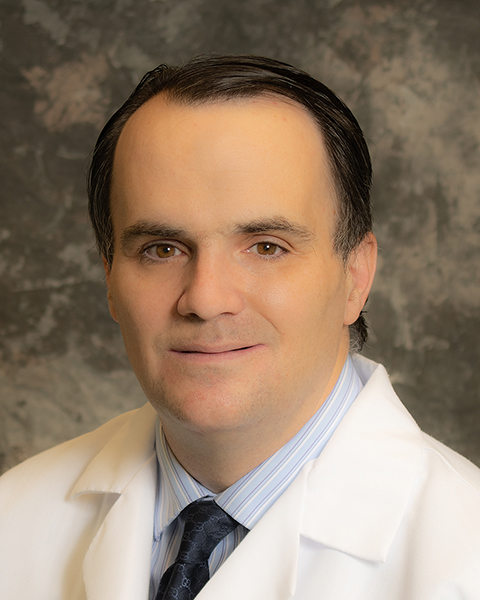How is Parkinson’s Disease Treated?

According to the Parkinson’s Foundation, nearly 60,000 Americans are diagnosed each year with Parkinson’s disease, a brain disorder that causes shakiness, stiffness and problems with balance and coordination. While there is no cure for Parkinson’s, treatment is available to help reduce symptoms.
What causes Parkinson’s?
“The main symptoms of Parkinson’s occur when nerve cells in the basal ganglia, which is the part of the brain that controls movement, become impaired or die,” said James Pacelli, MD, a neurologist with Penn Highlands Neurology in DuBois, Pennsylvania. “Unfortunately, we still do not know what causes the nerve cells to die.”
Some cases appear to be hereditary. However, while genetics is thought to play a role, most cases of the disease do not seem to run in families. Rather, many researchers believe that Parkinson’s occurs from a combination of genetics and environmental factors.
What are the symptoms?
Parkinson’s develops slowly over years, and symptoms generally begin on one side of the body. As the disease progresses, symptoms often affect both sides. Symptoms can include:
- Involuntary shakiness in the hands, arms, legs, jaw and face
- Stiffness or tightness in the arms or legs
- Slowness of movement
- Poor balance and coordination
- Quiet or slow speech
- Dementia (in advanced stages)
How is Parkinson’s disease diagnosed?
“There is no blood or imaging test that can check for Parkinson’s,” said Dr. Pacelli. “Instead, your physician will ask about your medical history and the symptoms you are experiencing. They will also perform a physical and neurological exam, which may include checking your hearing, vision, reflexes, balance, strength, memory and concentration.”
Because the symptoms of Parkinson’s disease are similar to other neurological conditions, your physician may order blood tests or scans to rule out other causes. They may also prescribe Parkinson’s disease medication to see if it helps reduce your symptoms. If it does, that would likely indicate your symptoms are caused by Parkinson’s.
How is Parkinson’s treated?
At this time, there is no cure for Parkinson’s disease. There are treatments, however, that can be effective at controlling symptoms and slowing the progression of the disease. Medication is typically very effective, especially if started in the early stages of the disease. If medication stops controlling your symptoms as the disease progresses, your physician may recommend a surgical procedure called deep brain stimulation, in which electrodes are implanted in the brain and emit electrical impulses to stimulate cells and chemicals.
Lifestyle changes also can help manage symptoms. Your doctor may recommend ongoing aerobic exercise, outpatient physical therapy that concentrates on balance training and stretching, speech therapy and occupational therapy.
Other lifestyle changes that may help reduce symptoms include:
- A balanced diet that includes foods high in fiber (to help prevent constipation that is common in Parkinson’s disease) and omega-3 fatty acids
- Exercise, which can increase your muscle strength, flexibility and balance
- Massage therapy to reduce tension
- Yoga and tai chi to increase stretching and flexibility
Your physician will work with you to develop a treatment plan that offers the greatest relief from your symptoms.
The neurologists and neurosurgeons at Penn Highlands Healthcare offer the most advanced treatments for brain conditions such as Parkinson’s, brain aneurysms and spinal conditions that cause back pain and neck pain. They also offer treatment for nerve conditions causing pain, including carpal tunnel syndrome and trigeminal neuralgia. To learn more, visit www.phhealthcare.org/neurology.

